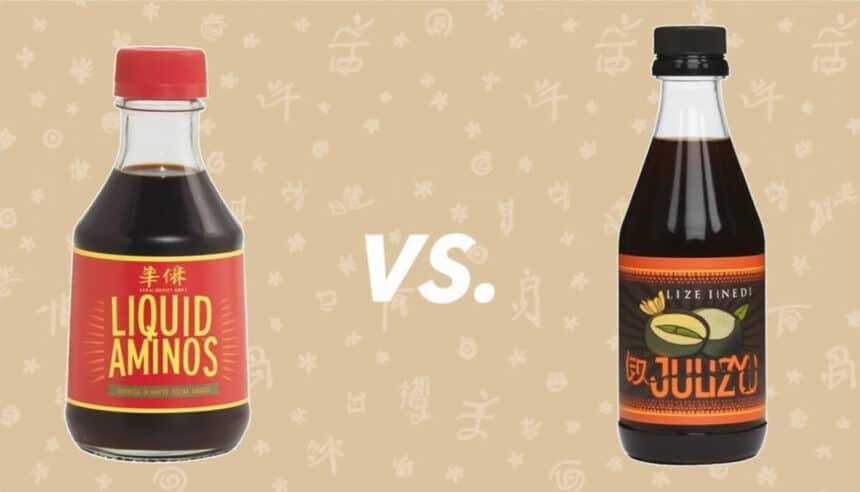Sometimes the simplest pantry pivot can feel like uncharted territory. You reach for your trusty soy sauce—dark, savory, reliable—and then spot that funky bottle of liquid aminos staring back at you. Is it really worth making the switch? As dietitians weigh in, it turns out that the answer depends on more than just taste buds.
A Salt Reduction Game-Changer
Let’s not beat around the bush: sodium is one of those sneaky villains in most kitchens. One heaping tablespoon of traditional soy sauce can pack anywhere from 800 to 1,000 milligrams of sodium. That’s nearly half your daily cap of 2,300 milligrams in a single drizzle. Yikes. Even “low-sodium” soy sauces hover around 500 to 700 milligrams—still too much for anyone wrestling with blood pressure or heart concerns.
By contrast, soy-based liquid aminos usually clock in at 300 to 600 milligrams per tablespoon. And coconut aminos? A mere 90 to 160 milligrams. Suddenly that umami hit feels a lot friendlier to your cardiovascular system. Registered dietitian Grace Derocha reminds us that swapping soy sauce for coconut aminos is a simple hack to slash sodium without surrendering flavor. Your arteries will thank you, and you won’t have to give up that savory punch entirely.
Isn’t it nice to season without fretting over ticking off your sodium tracker?
Beyond the Salt: Allergies, Diets, and More
I admit, I once grabbed regular soy sauce out of habit—without thinking about the wheat lurking in every fermented drop. Traditional soy sauce is basically a fermented mash of soybeans and wheat, which spells disaster for those with gluten issues. Sure, there are gluten-free soy sauces on shelves, but liquid aminos sidestep the problem entirely. Both soy and coconut varieties are naturally wheat-free.
And what if you’re paleo or allergic to soy? Coconut aminos become your pantry MVP—lent free, grain free, and guilt free. They do lean on the sweeter side (think caramelized coconut), so you might notice a lighter, almost tangy finish compared to the bracing depth of classic soy sauce. It’s not a flaw, just a flavor detour.
Protein Perks and Flavor Fallout
Here’s a quirky twist: the name “liquid aminos” isn’t marketing fluff. Soy-based aminos deliver about 1 to 2 grams of protein per tablespoon, thanks to those free amino acids derived from soybeans. Not earth-shattering—but for a drizzle, not a bad bonus.
Coconut aminos, on the flip side, offer almost zero protein. If you’re chasing a tiny nutritional bump, that’s worth knowing. And yes, you will taste the difference. Soy sauce’s bold, salty resonance is tough to replicate. Soy aminos mellow that punch, and coconut aminos swap salt for a whisper of sweetness. Depending on your dish—a stir-fry, a marinade, a cheeky dunk in your sushi roll—you might find one option dramatically better suited.
After sampling both, I realized that for a quick stir-fry at home, coconut aminos gave a playful sweetness that complemented veggies nicely. Yet I’d reach for traditional soy when I crave full-throttle umami in a ramen broth.
The Final Pour: What’s Your Priority?
If you’re laser-focused on cutting sodium, dodging gluten, or veering into paleo territory, liquid aminos—especially the coconut kind—are a clear upgrade. They maintain that luscious, savory vibe without overloading your system with salt or unwanted allergens.
But let’s be honest: nothing quite captures that deep, dark, soy-ferment magic like classic soy sauce. If you don’t have to worry about sodium limits or gluten intolerance, why rock the boat? There’s no rule against stocking both, rotating them according to mood and dietary whims.
Ultimately, the decision rests on your tastebuds and health goals. Are you chasing heart-smart swaps? Trying to trim your salt intake? Or simply seeking new flavor horizons? Embrace the switch—or cling to soy sauce with loyalty. Either way, your stir-fries and marinades will still sing.
What’s your take? Have you fallen in love with coconut aminos—or do you swear by soy sauce’s timeless umami? Drop a comment below, let us know your flavor hack, and don’t forget to follow MusclePact on Facebook and Instagram for more kitchen experiments and nutrition tips.
Can running really build muscle? Science says yes—here’s how.
Sources:
- www.today.com/health/diet-fitness/liquid-aminos-vs-soy-sauce-rcna177781
- www.medicalnewstoday.com/articles/liquid-aminos-benefits
- www.healthline.com/nutrition/coconut-aminos






